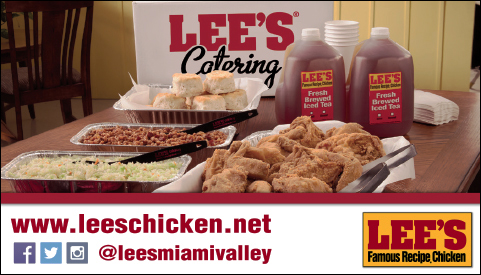The year 1900 began a decade of food changes in the States that has never stopped evolving. Five factors mixed together like fruit smoothies in a blender, emulsifying into the world of cooking as we know it today.
By 1900, waves of immigrants landed in America with their own ethnic foods and eating traditions. Some of the most popular new ethnic establishments were Italian pizzerias in New York.
Science and technology were breaking out into the food industry. New machines for cooking, baking and massive conveyer belts all brought about larger industrial complexes which shipped by truck, plane, train and ships new products which could stay fresh longer due to scientific discoveries of chemical compounds bent on ingredient stability.
Home economics and nutritional programs were being established in high schools, colleges, hospitals and through government incentives to boost the healthy eating of families.
New companies were on the rise, growing in leaps and bounds like a bread dough gone rogue. Nabisco, Campbell, Quaker Oats, Jello, Kraft, General Mills, Swift (canned meats) all had their products on shelves with colorful magazine ads and cute jingles on television commercials.
Last but not least were the governmental interventions such as the above mentioned nutritional programs. Laws were enacted frequently to try and safeguard food quality and transportation. The Food and Drug Administration was established June 30, 1906 after the passage of the Pure Food and Drugs Act.
So, in one hundred and sixteen years a lot has been going on with our food. No matter how many new ways have been found to cook any particular dish, sometimes the old is just the best. It is simple, clean tasting and even though it may take more time than one would wish to put out on it, time spent cooking a delicious meal for family and friends is never wasted.
Two popular recipes just before 1900 were Shrimp Wiggle and Lane Cake. The wiggle dish was popular with college women because it could be cooked over low heat in the dorm room, even though that sort of thing was frowned upon. Lane Cake was recorded as far back as 1898. Emma Rylander had a knack, as most southern ladies did and still do, for taking a simple beginning and embellishing it to gourmet heights.
We can thank science and technology every time we snack on an ice cream sandwich. By 1900, a cheaply priced double treat was possible on the streets of New York and beyond as freezing units became available in a small size-hence the ice cream man pushing his ice cream cart.
Because of nutritional programs the humble elbow macaroni stepped onto the world stage. The pasta was hailed as a “high class article” and Mueller’s advertised it as a convenience food which took less cooking time and would fit into any budget. By 1911, an advertised weekly market sale put it out at three pounds for twenty-one cents.
Swiss steak was among the top recipes across the country. Home economic classes taught students how to make it. At one point, high school class recipes were gathered together to the tune of twenty-two different ways to Swiss a piece of beef. Restaurants served it. Formal dinners and ladies’ luncheons were held with the ease and low cost of the dish.
So, in keeping with the simple ways of long ago, here is a sampling of what was on the table back then.
Shrimp Wiggle
- One can of shrimp
- One pint of heavy milk
- One can of peas
- 2 tablespoons flour
- Water
- Butter
In the top of a double boiler or bowl of a chafing dish (heating element on), pour the milk. Heavy milk was another term for milk with the cream still in it. Just before the milk boils, stir in the flour which has been thoroughly mixed with a bit of water. Stir constantly to prevent lumping.
When thickened, add drained shrimp and drained peas. Cook about 10 minutes, stirring constantly. Just before serving stir in a spoonful of butter. Some salt and a bit of cayenne can be added for extra flavor. Serve over buttered toast points.
Contact Connie at This email address is being protected from spambots. You need JavaScript enabled to view it. or Box 61, Medway, OH 45341
Swiss Steak
- 2 pounds round steak
- 6 tablespoons seasoned flour*
- 2 tablespoons oil or shortening
- 2 cups cooked or canned tomatoes with juice
- 1 small onion, sliced
- 1 stalk celery, diced
Cut meat into serving portions. * To make seasoned flour, mix it with a teaspoon of garlic powder, dash of ground black pepper, and a tiny bit of cayenne if you want some heat to the mix. Using meat mallet or heavy saucer edge, pound the flour into each piece of meat.
Brown meat on both sides in the oil in a heavy skillet. Add rest of ingredients. Cover and cook over low heat, simmering for about 2 hours. Can be covered in skillet or transferred to casserole dish and covered to be baked in oven on 300 degrees for 2-2 ½ hours. Remove cover the last ½ hour to thicken sauce. Serve over hot noodles, mashed potatoes or hot rice.
Lane Cake
- 3 cups flour
- 1 tablespoon baking powder
- 8 egg whites
- ¼ teaspoon salt
- 2 cups sugar, divided
- 1 cup butter, softened
- 1 teaspoon vanilla
- 1 cup milk
Sift together flour and baking powder. Set aside. In large bowl, beat egg whites and salt until foamy. Add ½ cup of the sugar, beat until stiff peaks form. Set aside. Cream butter, the remaining 1 ½ cups sugar and vanilla until fluffy. Stir in flour mixture alternately with milk until smooth batter forms. Fold in egg whites gently. Divide batter between three greased and floured 9-inch round cake pans. Bake in 350 degree oven for 20-25 minutes or until done as tested with toothpick. Cool for 5 minutes, then remove and cool on racks.
Filling:
- 8 egg yolks
- 1 cup sugar
- 1 cup raisins
- 1 cup shredded coconut
- ½ cup butter, softened
- ¼ cup bourbon or blended whiskey
Combine egg yolks, sugar, raisins, coconut and butter in top of double boiler. Cook over simmering water, stir constantly until mixture is very thick. Remove from heat and stir in bourbon. Cool completely. Spread between layers.
Frosting
Boiled Frosting:
- 1 ½ cups sugar
- ½ teaspoon cream of tartar
- Dash of salt
- ½ cup hot water
- 4 egg whites
Combine sugar, cream of tartar, salt and water in small saucepan. Cook until soft-ball stage (240 degrees) is reached on candy thermometer. Beat egg whites in large bowl until stiff. Pour hot syrup in thin stream into egg whites constantly beating on high until frosting holds stiff peaks and is shiny and smooth. Frost sides and top of cake.

